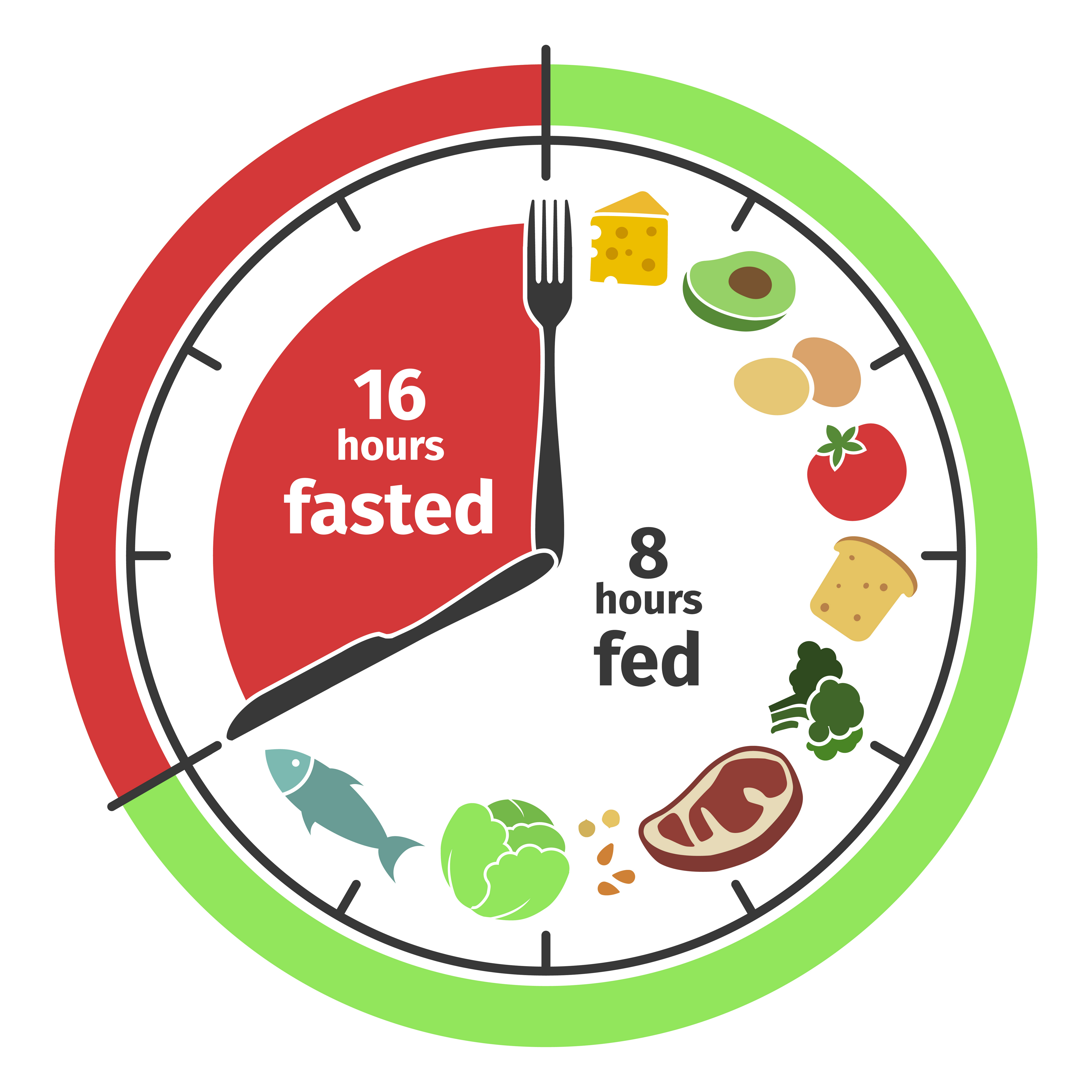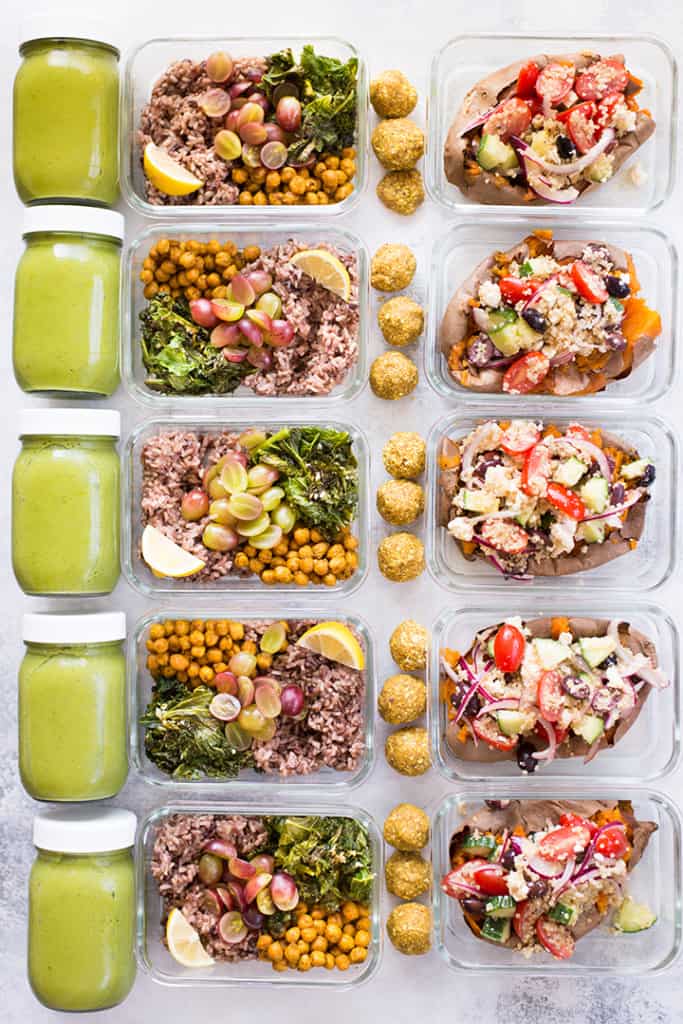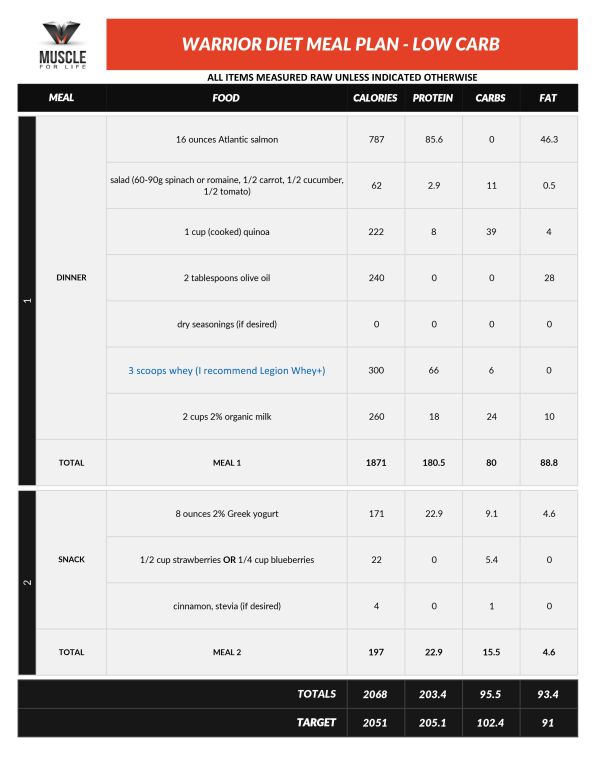Want to give intermittent fasting a try? Meal planning is the key to success! We’ve put together an easy-to-follow meal plan that will help you get the most out of your fasting experience. Read on for all the delicious details!

What is Intermittent Fasting?
Intermittent fasting is a dietary practice that involves restricting your food and calorie-containing beverages to a set window of time each day. The most common type of intermittent fasting is the 16/8 method, which involves limiting your eating window to 8 hours per day and abstaining from food for the remaining 16 hours. During the fasting window, you are allowed to consume drinks like plain coffee, tea, and water. Intermittent fasting can be used to help you lose weight, improve mental clarity, and boost energy levels. It is important to note that while intermittent fasting can be beneficial, it should not be used as a substitute for a balanced, healthy diet.

Benefits of Intermittent Fasting
Intermittent fasting is becoming increasingly popular as a way to improve health and support weight loss. While it is not a diet, intermittent fasting has many benefits, including improved digestion and mental clarity, increased energy, and reduced inflammation. It can also help to lower your risk for chronic diseases, reduce your risk of certain cancers, and even help you lose weight. Intermittent fasting can also help to regulate your circadian rhythm, which is important for overall health and wellness.

Different Types of Intermittent Fasting
Intermittent fasting is a popular dietary approach that involves cycling between periods of eating and fasting. There are a variety of different types of intermittent fasting, and each type has its own unique benefits. The most popular types of intermittent fasting include: 16/8, 5:2, and one-meal-a-day (OMAD).
The 16/8 method is one of the most popular forms of intermittent fasting. It involves fasting for 16 hours and eating during an 8-hour window. For example, if you start your fast at 8pm, you would break your fast at noon the following day. During the 8-hour window, you can eat all your meals or split them up into smaller meals.
The 5:2 method involves eating regularly for five days and then fasting for two days. On the two fasting days, you should eat about 500-600 calories. This type of intermittent fasting is great for those who want to lose weight and don’t have a lot of time to dedicate to fasting.
The OMAD method involves eating one meal a day, usually within a one-hour window. This type of intermittent fasting is great for those who want to lose weight quickly and don’t mind going a full day without eating.
No matter which type of intermittent fasting you choose, it’s important to remember that it should be tailored to your lifestyle and goals. It’s best to experiment with different types and find the one that works best for you.

Intermittent Fasting Meal Plan: What To Eat and When?
Are you interested in trying out an intermittent fasting meal plan? Intermittent fasting is a great way to reset your body and help you lose weight. Knowing what to eat and when to eat it is an important part of maintaining a successful intermittent fasting meal plan.
Intermittent fasting is not a diet, but rather an eating pattern that alternates between periods of eating and fasting. Most people follow a 16/8 method, where they fast for 16 hours and eat during an 8-hour window. During this 8-hour window, it’s important to eat balanced meals that contain lean proteins, healthy fats, and complex carbohydrates.
In order to maximize the benefits of intermittent fasting, it’s important to focus on nutrient-dense foods that will help keep you feeling full. Some suggested foods for an intermittent fasting meal plan are eggs, avocados, nuts, seeds, lean proteins, and leafy greens. Eating healthy snacks throughout the day can also help keep you feeling full and energized.
Eating a variety of whole foods is key to maintaining a successful intermittent fasting meal plan. Be sure to include plenty of fruits and vegetables, as well as complex carbohydrates like quinoa and brown rice. Eating a balanced diet is important for providing your body with the vitamins, minerals, and other nutrients it needs to stay healthy and energized.
It’s also important to stay hydrated while on an intermittent fasting meal plan. Drink plenty of water throughout the day to help keep you energized and feeling full. You can also enjoy coffee or tea, but be sure to skip the added sugar.
When planning your meals for an intermittent fasting meal

Tips for Getting Started with Intermittent Fasting Meal Plan
Getting started with an intermittent fasting meal plan can be intimidating, but it doesn’t have to be. Here are some tips to make the process easier:
1. Start Small: Start by fasting for 12 hours each day and gradually increase the duration of your fasting period.
2. Stay Hydrated: Drink plenty of water and other calorie-free beverages like tea and coffee to keep hydrated during your fasting period.
3. Avoid Unhealthy Foods: Eating unhealthy foods during your eating window can sabotage your efforts. Instead, opt for healthy, whole foods that will keep you feeling full and energized.
4. Focus on Healthy Fats: Healthy fats are essential for a successful intermittent fasting meal plan. Try incorporating foods like nuts, olive oil, avocado, and fatty fish into your diet.
5. Track Your Progress: Tracking your progress can help you stay motivated and on track. Monitor your weight, energy levels, and other health metrics to gauge how your body is responding to your intermittent fasting meal plan.
6. Get Support: Find a buddy or join a support group to help keep you accountable. Having someone to talk to and to share your successes and struggles with can make a big difference.

Healthy Recipes for Intermittent Fasting Meal Plan
Doing an intermittent fasting meal plan doesn’t mean that you have to sacrifice delicious and nutritious meals. In this section, we’ll provide you with some healthy and tasty recipes that fit into your fasting schedule.
For breakfast, you can make a smoothie with almond milk, blueberries, banana, and chia seeds. Or if you’re in the mood for something savory, try a vegetable frittata with spinach, mushrooms, tomatoes, and onions.
When it comes to lunch, you can make a tasty quinoa bowl with black beans, avocado, cherry tomatoes, and a homemade lemon vinaigrette. Or, try a fresh and filling salad made with kale, feta cheese, walnuts, and an apple cider vinaigrette.
For dinner, you can make a flavorful bowl of Thai curry with coconut milk, broccoli, bell peppers, and tofu. Or, make a vegetable stir-fry with zucchini, snap peas, mushrooms, and garlic.
You don’t have to give up delicious meals while on an intermittent fasting meal plan. With these recipes, you can enjoy healthy and flavorful meals that fit into your fasting schedule.

Eating Out During an Intermittent Fasting Meal Plan
Eating out while following an intermittent fasting meal plan can be tricky, but it is possible. It’s important to be aware of the ingredients and nutritional value of your food when eating out. Make sure that your meals are balanced and contain healthy proteins, fats, and carbohydrates. Look for restaurants that offer options that fit your dietary restrictions and make sure to ask questions about how the food is prepared. Restaurants often have menus online so you can plan ahead and make informed decisions about the food you order. When eating out, it’s also important to practice portion control and avoid processed foods, sugary drinks, and fried foods.

Intermittent Fasting and Exercise
Exercising while following an intermittent fasting meal plan is a great way to get your body moving and help you reach your health goals. Exercise can help to boost your metabolism and regulate your hunger levels. It’s important to remember, however, that when you’re following an intermittent fasting meal plan, your body needs time to adjust and you may not have the same amount of energy for physical activity.
It’s best to start slow and gradually build up your exercise routine. Aim for 30 minutes of moderate-intensity exercise at least 3 times a week. Low-intensity activities such as walking and yoga are also beneficial. You can also combine aerobic exercises such as running or cycling with strength and resistance training exercises.
It’s important to make sure you’re getting enough fuel for your workouts. Eating a balanced meal after a workout is important for recovery and muscle repair. Your post-workout meal should include a combination of carbohydrates, proteins, and healthy fats. Aim for complex carbohydrates such as oats, whole grain bread, or quinoa, lean proteins such as poultry, fish, or tofu, and healthy fats such as nuts and seeds.
It’s also important to stay hydrated when exercising. Make sure to drink plenty of water before, during, and after each workout. Drinking a sports drink or having a protein shake post-workout can also help to replenish lost electrolytes and provide your body with the nutrients it needs for recovery.
Overall, exercising while following an intermittent fasting meal plan can be a great way to reach your health goals. Just remember to start slowly and gradually build up your routine, eat a balanced post-workout

Common Mistakes When Starting an Intermittent Fasting Meal Plan
With any new diet plan, there are bound to be some mistakes that are made when starting out. Intermittent fasting meal plans are no different. While it can be easy to get started with an intermittent fasting meal plan, there are some common missteps that you should try to avoid.
One of the most common mistakes when starting an intermittent fasting meal plan is not drinking enough water. Water is essential to staying hydrated and energized during fasting periods. It also helps to keep your metabolism going and helps you feel fuller for longer.
Another common mistake when starting an intermittent fasting meal plan is not eating enough protein. Protein helps to keep you full and helps to maintain muscle mass, which is important when trying to lose weight. Aim for foods that are high in protein such as fish, eggs, and lean meats.
Finally, some people make the mistake of overeating during their eating window. It is important to remember that the goal of an intermittent fasting meal plan is to create a calorie deficit rather than overeating. Eating too much during your eating window will not help you reach your weight loss goals.
These are some of the most common mistakes when starting an intermittent fasting meal plan. Remember to stay hydrated, eat enough protein, and practice mindful eating during your eating window. Doing so will help you reach your weight loss and health goals.

Final Words on Intermittent Fasting Meal Plan
Intermittent fasting is a great way to jumpstart a healthy lifestyle, and it can be tailored to meet different goals and needs. It’s important to remember that fasting should never be used as a way to lose weight quickly, and that nutrition and exercise should always be part of any weight loss journey. If you’re interested in trying intermittent fasting, it’s important to speak to a medical professional first to make sure it’s the right choice for you, and to have guidance when starting. With the right plan, support and guidance, intermittent fasting can be a great tool for a healthier lifestyle.

![3a64fd83-a60c-4914-a9c5-e8d1354b75e9[1]](https://www.viralstories360.com/wp-content/uploads/2022/12/3a64fd83-a60c-4914-a9c5-e8d1354b75e91-696x659.jpg)